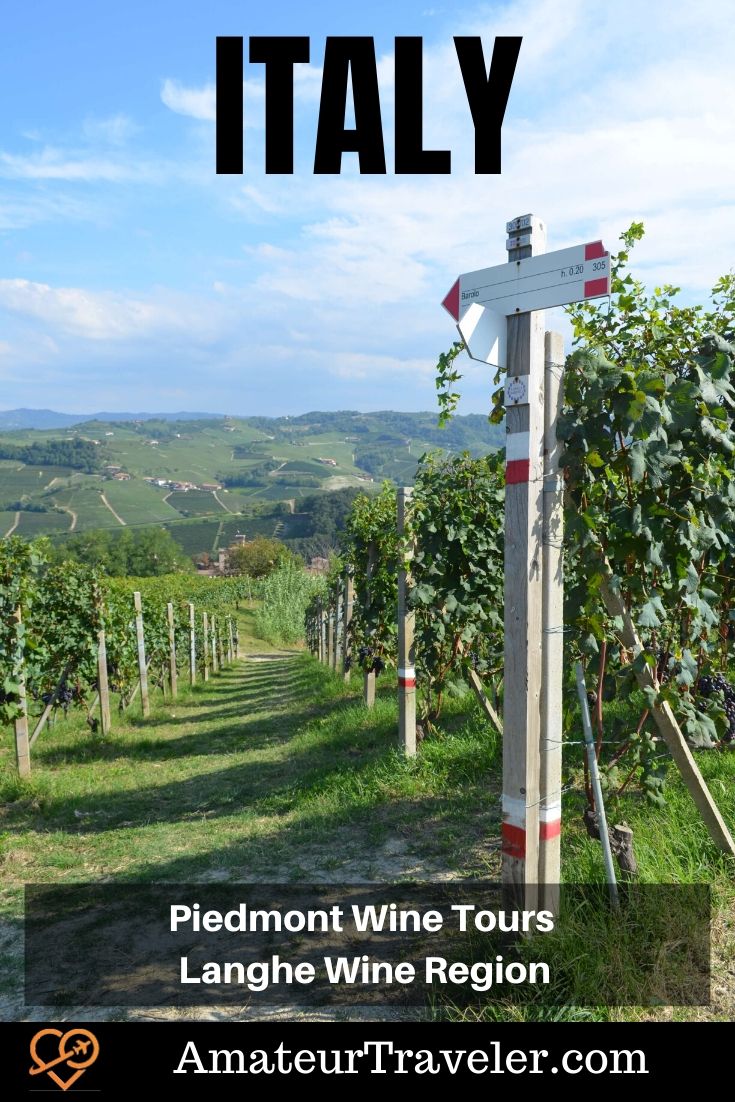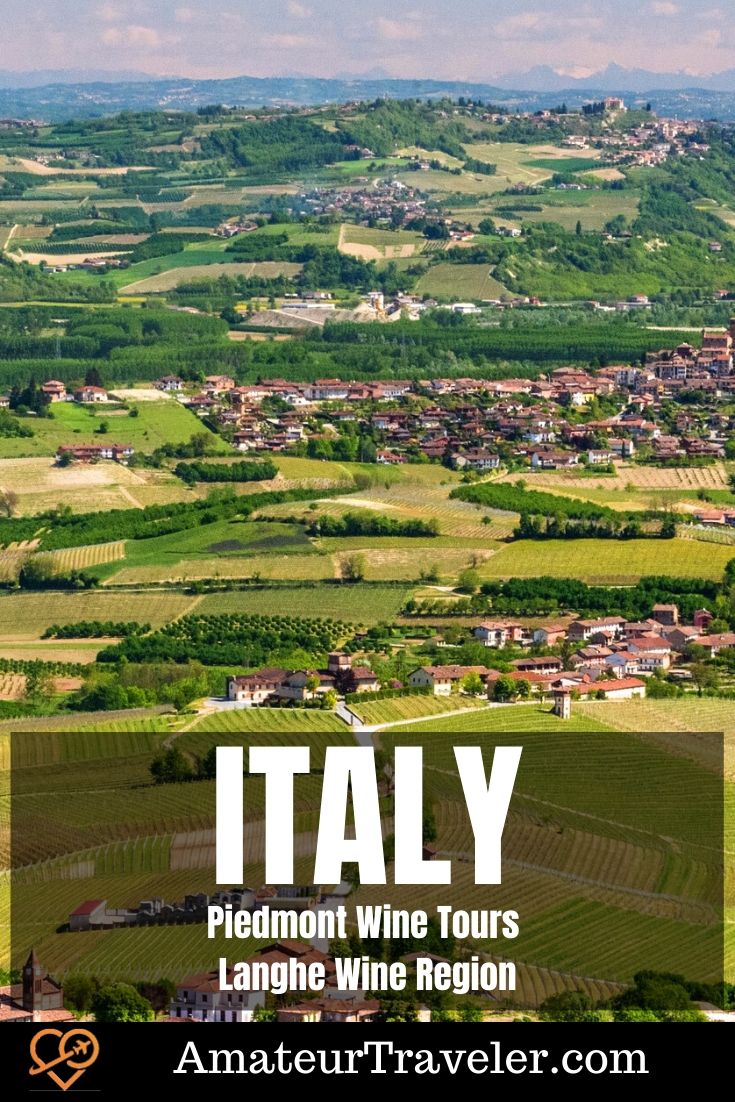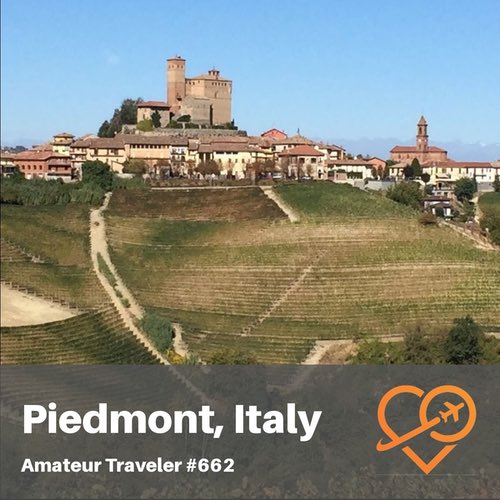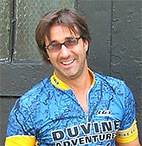Has Italy always been on your bucket list? If so, you will love hearing about one of Italy’s hidden gems, a destination you must absolutely know of before booking your trip. Far from the tourist crowds, in a land where time slows down and only nature is king, the Langhe hills will simply win your attention and steal your heart.
Table of contents: ()

Langhe
Langhe is a renowned wine region famous for its red and white wines, its excellent cuisine and the beautiful landscape with the highest density of vineyards in the entire world. Unlike our French neighbor, we use the local dialect “sorì” and not “cru” to indicate the best vineyards. These are the ones with the best exposure, and the ones that lend their names to the bottle’s label. In the local dialect, the word “sorì” means “sunny place”. Once you have been in the Langhe you will need only to close your eyes and imagine the gentle warmth of the sun on your face to pretend you are here again.
Discover a unique journey through history and wine in the very heart of the Langhe wine region, a UNESCO world heritage site since 2014 (together with the neighboring wine regions of Roero and Monferrato). The Langhe is a small area of about 24,700 acres in Piedmont, or Piemonte as we call it, in the North-West of Italy, where the country borders with France and Switzerland.
The Langhe is the rolling countryside landscape that is the birthplace of one of the finest wines of the world, the “king of wines”, Barolo. Nobody knows with certainty the origin of the name Langhe. Some believe it used to mean “hill” in the local dialect; others insist it was how people would call the castles decorating the hilltops. Lately, the name Langhe has been compared to the saying “Andar per Langa” which means to wander from the top of one hill to the next one. The Langhe has a great history, an extraordinary wine culture, and an excellent culinary tradition. The area is rich in woods, sweet slopes, natural truffles and, of course, vineyards.
Alba
The city of Alba is the heart of Langhe. Alba, just two hours away from Milan, is renowned for its white truffles, the finest in the world. The Alba white truffle is delicately shaved on top of eggs or fine pasta dishes after the truffle hunts during the fall season. The price of these truffles varies depending on market availability. On average, a white truffle from Alba weighs 50 grams (1.7 oz) and its cost ranges from $220 to $1190. In Alba in 1929, Giacomo Morra started the now famous International Fair of the Alba white truffle that takes place every year in the city.
The city of Alba is also the home of the Nutella factory. In fact, it collects most of the hazelnuts from the surrounding land to make its famous spread.
Piedmont Wineries
The Piedmont region lays claim to 1,800 wineries. If you ever find yourself planning a trip to Italy, make sure you spend at least a couple of days in the Langhe hills, where you can taste some of the most amazing wines in the world. The Langhe area is easily accessible from everywhere in Piedmont, as well as the nearby regions of Liguria and Lombardy.
When to Visit Langhe
Writing from Turin, the capital city of Piedmont, I can easily say that the best times of the year to visit this part of my region are the late spring and the fall, although my favorite time to be in the Langhe is definitely the fall. From September to November, you can witness the most beautiful transformation: the vine leaves turn yellow, gold, red; every hill changes its appearance; the wine region turns into a fiery land.
Monforte Vinyards
Historic Towns
There are three towns you cannot miss along your journey in this hypothetical wine tour of the Langhe hills: la Morra, Barolo and Monforte. Most of the hamlets that decorate the top of these hills have developed with a French influence. Still, today they remain very small villages, comprising just a castle and a church, usually next to the town hall, and a school. The main vie (streets) and piazze (squares) echo the same three names everywhere: via Roma, via XX Settembre and via Cavour. These are, respectively, references to the Italian capital, the date of September 22nd 1870, when the Italian Army captured the Vatican State soon after the country’s unification, and to a very important political figure, the Count of Cavour.
La Morra
Let’s start our journey from La Morra. This town has the best panoramic viewpoint of Langhe. With an altitude of 1,680 feet, La Morra looks out over the main Barolo vineyards, the Po Valley (the longest of Italy’s rivers at 650 km) and the Alps. The name of the town means “stockyard”, evidence of the importance of agriculture in the territory.
From Piazza Martiri, which was once the bustling Old Market, a quaint narrow street, stretches before you, named after one of Italy’s 19th century Savoy Kings and it’s full of delicious coffee places and gelaterie. A walk from here will take you to the main piazza, Piazza Castello. The bell tower is open to the public and offers a breath-taking view over the roofs and the distant vineyards. Equally lovely is the view from the piazza itself, especially if you’re comfortably seated on one of the many sun-drenched benches.
From La Morra, you can see the medieval castles of Barolo, Castiglione Falletto and Serralunga, among the most famous of the Langhe landmarks. Every time that I start my tours from here, I look for a place to have some breakfast or buy some fresh bread and breadsticks. Perfect for when we soon after start our wine tour.
La Morra Wineries
Among the several wineries of La Morra you should absolutely visit the historic Cordero di Montezemolo winery and Renato Ratti winery, both ideally situated on panoramic hills. Being the center of Barolo wine production, La Morra wineries have very long traditions.
The Ratti winery is in the historical area of Marcenasco, near the 14th century Abbey of the Annunziata where Renato bought his first plot of land in the 1960s. Their elegant wines include Barolo docg Marcenasco, Barolo DOCG Conca, the Cedri, Villa Pattono, and Barolo docg Rocche dell’Annunziata. Here, a passionate local guide will take you on a tour of the cellars and delight you with a tasting of their finest wines in the famous tasting room facing the vineyards. You can choose private tours or group tours depending on your budget.
On a nearby hill, the Montezemolo family has been managing the estate on the Monfalletto Hill for almost 20 generations, since the mid-14th century. On the highest part of the hill, there is an iconic tree, another landmark of the Langhe. It is the Lebanon Cedar Tree. The huge tree was planted around 1856 as a sign of love for a wedding and still stands tall and fierce surrounded by vineyards. Today it is not accessible to the public, but you can still walk very close to it and take a memorable picture with the giant in the background. Giovanni Cordero di Montezemolo was granted Unesco World Heritage Status as the winery architecture was capable of maintaining the antique structure after recent renovations. Among the Montezemolo wines, you will find the Langhe Nebbiolo, Barolo Monfalletto, Barbera d’Alba, Langhe Arneis, and Langhe Chardonnay Elioro. Visits to their winery are educational and entertaining.
Arneis, barbera, dolcetto, and nebbiolo are the most typical grape varieties of the Langhe area, but every winery has its special way to produce their wines. The Langhe soil has a unique composition: 23% sand, 52% loam, and 25% clay. Millions of years ago the entire area was underwater, in other words, it was a seabed. This explains the very unusual soil and the uniqueness of the Piedmontese wines. The most famous of them is Barolo, which takes its name from the eponymous town, only fifteen minutes away from La Morra, and our next stop.
Barolo
While La Morra castle was destroyed during the French occupancy, Barolo is still dominated by its elegant castle first built in the 10th century. Seven hundred people live in the town, and you will love walking by their houses on the way to the castle. Flowers and small shops make the winding streets cozy and welcoming. The castle is the heart of town. Inside its walls is the WIMU, the renowned Wine Museum dedicated – of course – to the secrets of local wine production.
In 1250, the Falletti House acquired the castle, and Carlo T. Falletti’s wife, the Marquise Juliette Colbert, became one of the protagonists in the history of the Barolo wine. Together with the enologist Luis Oudart, the Marquise and the Count of Cavour transformed a wine that was then very difficult to preserve into the Barolo we know today.
Barolo is made with Nebbiolo grapes and in order to be considered a Barolo wine it needs to age for a minimum of thirty-eight months. After a stroll in sunny Barolo, there’s the possibility for a quick stop at the entertaining corkscrew museum outside the castle. You will recognize it right away thanks to the old sign shaped like a classic bottle opener. Shall we look inside? The gift shop at the entrance is quite an attraction itself.
Barolo Wineries
From here there are two wineries on our must-do list. The first winery is more for the traditionalists, while the second is definitely more of a contemporary art piece.
The first is located in the town of Barolo. Right on the main street, we can find the Marquises of Barolo winery, which offers a truly classic wine tour and tasting opportunity. The elegant estate hosts 18th century cellars with a superb collection of 30,000 bottles of Barolo. Among their wines is the Barolo DOCG Cannubi that costs an average of 50€ a bottle.
Our second winery, L’Astemia Pentita is located just five minutes away. A unique structure, the moment the estate appears on our right, you will start wondering who came up with that idea. The winery looks like two giants wine cases overlapped. There is a large terrace by the entrance and Giorgio will be waiting for us on the front steps. He will take us on a tour of the four floors of the winery, each one painted and decorated according to one of the four seasons. The colors are bright and the bottles are all shaped in unique styles. This is the right place to be if you want to experience something “different” and taste some special flavors. Their wines include Barbera d’Alba, Dolcetto d’Alba, Langhe Doc Nascetta, and, of course, Barolo Cannubi. The Hill of Cannubi is, in fact, right by the estate.
Monforte
After La Morra and Barolo, we should head toward Monforte, the third town I mentioned before. Monforte has its origins in Roman times, but it was during the medieval period that the Mons Fortis – the fortified castle that gives it its name – was built. The view from here is particularly inspiring in the late afternoon, right before sunset. The city walls are still visible and solid, and the very steep streets climbing to the top of the hill are known for their excellent restaurants. There are many traditional osterie (taverns), modern restaurants, and larger restaurants often chosen for wedding receptions. To name just a few, you should not miss the Osteria dei Catari and Le Case della Saracca.
At the highest point of Monforte, rests the 13th century bell tower, still intact, two 17th century churches, and another gorgeous Langhe landmark: the amphitheater. The Monforte amphitheater is named after the famous pianist M. Horszowski (1892-1993) and every summer hosts a jazz festival together with many other shows and concerts thanks to its perfect acoustics. It is a part of the town you cannot miss. The large amphitheater steps are now home to a layer of soft green grass and with the bell tower and the brick churches nearby, it is one of the most magical and romantic places in the area.
Monforte Wineries
The Giacomo Conterno winery in Monforte is, in my opinion, one of the most exquisite of this part of the Langhe Hills. The estate was founded in 1908 by Giacomo’s father, Giovanni Conterno. Giovanni started everything when he opened a wine bar in the nearby village of San Giuseppe. Today they produce one of Italy’s greatest wines, the Barolo Monfortino. Unlike other Barolo wines that age for about four years, the Barolo Monfortino reaches seven years of aging prior to bottling.
Italian Wine
Italian wine law has two supreme quality classifications: DOC and DOCG, and you can find both of these terms on wine labels. DOC stands for Denominazione di Origine Controllata (Denomination of Controlled Origin). DOCG stands for Denominazione di Origine Controllata e Garantita (Denomination of Controlled and Guaranteed Origin). The two designations were introduced twenty years apart, in 1960 and 1980, respectively. The DOCG was added to make regulations more restrictive. The DOC identifies the area where the wine can be produced, while the DOCG lowers the maximum grape yields allowed. There are 330 DOC Italian wines and 77 DOCG, 31 of which are just in Piedmont and Veneto.
Conclusion
Visiting Piedmont can be enthralling in so many ways. The wine tour I have just described can be extended and last up to three days if you decide to explore the regions that neighbor Langhe and that are just as amazing. But Piedmont is also rich in ancient history, glorious castles, world-famous museums, botanical gardens, peaceful lakes and quaint, little islands. I recommend allowing 6-7 days to truly discover Italy’s hidden gem that is the Piedmont, and to plan in advance to make the best of your Italian holiday. Choose your pace: you can travel comfortably seated in a private car, explore the surroundings riding a bike, or even fly over the countryside in a hot air balloon.
- Get a Car Rental
- Buy Travel Insurance
- Search for Great Tours HERE
- Get a universal plug adapter
- Book Your Accommodation HERE
- Get an eSim to be able to use your smartphone abroad.


Image by nirolfix from Pixabay


 Travel to the Piedmont Region of Italy – Episode 662
Travel to the Piedmont Region of Italy – Episode 662 Rhine River Wine Cruise on AMAWaterways in Germany
Rhine River Wine Cruise on AMAWaterways in Germany DuVine Adventures – Bike & Wine Tours – Episode 39
DuVine Adventures – Bike & Wine Tours – Episode 39 Photo Walking Tours of Dublin with Dawn2Dusk Tours
Photo Walking Tours of Dublin with Dawn2Dusk Tours

Sonia Spicer
Says:April 10th, 2020 at 8:59 pm
Ciao Carlotta! I loved reading your piece on Piedmont’s beautiful areas, we will take one of your tours one day! Bella Carlotta, may you and your family be safe and well, and all of Italy be resolute in these uncertain times. Sonia x
Kent Van Hemert
Says:April 12th, 2020 at 7:41 am
Ciao Pinecone!
I loved seeing photos of the beautiful Piedmont countryside!
Happy Easter, Christ is Risen!
Stonefly (aka Kent)
Chris Christensen
Says:April 12th, 2020 at 7:46 am
He is risen indeed!